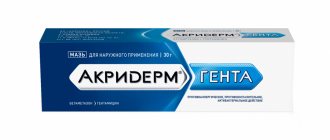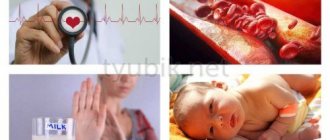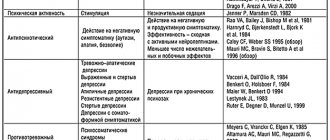Home | About us | Delivery | Advertisers | Login | Registration
Delivery on Sundays and holidays does not work!
- Medicines
- dietary supplementsVitamins
- Categories from A to Z
- Brands from A to Z
- Products from A to Z
- Medical equipment
- beauty
- Child
- Care
- Honey products appointments
- Herbs and herbal teas
- Medical nutrition
- Journey
- Making medicinesStock
Pharmacy online is the best pharmacy in Almaty, delivering medicines to Almaty. An online pharmacy or online pharmacy provides the following types of services: delivery of medicines, medicines to your home. Online pharmacy Almaty or online pharmacy Almaty delivers medicines to your home, as well as home delivery of medicines in Almaty.
my basket
Apteka84.kz is an online pharmacy that offers its customers medicines, medicinal and decorative cosmetics, dietary supplements, vitamins, baby food, intimate products for adults, medical equipment and thousands of other medical and cosmetic products at low prices. All data presented on the Apteka84.kz website is for informational purposes only and is not a substitute for professional medical care. Apteka84.kz strongly recommends that you carefully read the instructions for use contained in each package of medicines and other products. If you currently have any symptoms of the disease, you should seek help from a doctor. You should always tell your doctor or pharmacist about all the medicines you take. If you feel you need further help, please consult your local pharmacist or contact our GP online or by telephone.
© 2021 Pharmacy 84.
Aminoglycosides are a group of antibiotics used since the 1940s to treat a wide range of bacterial infections. Amikacin is one of the most successful semisynthetic aminoglycosides, introduced back in 1977 and still used with great success to treat various severe infections.
Synonyms Russian
Aminoglycoside, semisynthetic aminoglycoside, antibiotic.
English synonyms
Amikacin, aminoglycosides.
Research method
High performance liquid chromatography with tandem mass spectrometry.
Units
mcg/ml (micrograms per milliliter).
What biomaterial can be used for research?
Venous blood.
How to properly prepare for research?
- Children under 1 year of age should not eat for 30-40 minutes before the test.
- Do not eat for 2-3 hours before the test; you can drink clean still water.
- Do not smoke for 30 minutes before the test.
General information about the study
Aminoglycosides are a group of antibiotics used since the 1940s to treat a wide range of bacterial infections. Their importance in medical practice has decreased due to the emergence of other broad-spectrum antibiotics with fewer side effects. However, today, with a sharp increase in infections caused by multidrug-resistant bacteria, there is a renewed focus on aminoglycoside antibiotics as one of the few remaining treatment options, especially for Gram-negative pathogens.
All natural aminoglycosides used to date are produced by soil bacteria belonging to the genera Streptomyces or Micromonospora. As is the case with all antibiotics, bacteria have developed several mechanisms of resistance to this group of drugs. Among the many approaches aimed at solving the problem of resistance, the modification of the aminoglycoside molecule has become the most promising. The addition of chemical groups allowed the synthesis of new compounds to which bacteria had no resistance. Such aminoglycosides are called semisynthetic.
The most widely used semisynthetic aminoglycoside is amikacin. This antibiotic was introduced in 1977 and is still used to treat various infections with great success. 30-60 minutes after intravenous administration, a peak concentration of amikacin in the blood serum is observed. The optimal antibacterial effect is achieved when the maximum serum concentration is 8-10 times higher than the minimum inhibitory concentration (MIC). Basically, amikacin is administered in a dosage calculated depending on the patient's weight and divided into two to three doses per day, or once a day. Amikacin is an aminoglycoside commonly used in intensive care units to treat patients with life-threatening Gram-negative infections. It acts bactericidal, that is, it causes the death of the microorganism. The mechanism of its action is to bind to the 30S subunit of bacterial ribosomes, prevent the formation of a complex of transport and messenger RNA, block the synthesis of bacterial protein, and also destroy the cytoplasmic membranes of bacteria. Because amikacin produces toxic effects common to aminoglycosides, namely ototoxicity and nephrotoxicity, a dosage regimen that maximizes therapeutic results and minimizes adverse effects is of great importance.
What is the research used for?
- To determine the concentration of the drug in the blood.
- To select an individual dosage of the drug.
- To optimize treatment control through dose adjustments.
- To assess drug interactions.
- To diagnose overdose.
- To identify violations of the drug regimen.
- To prevent the toxic effect of the drug.
When is the study scheduled?
- When prescribing amikacin for the treatment of infections sensitive to this drug.
- If necessary, determine the concentration of the drug and monitor its fluctuations in the blood.
- If the effectiveness of the drug used is insufficient and the issue of dose adjustment is decided.
- When changing the dosage and dosage form of the drug.
- If a drug overdose is suspected.
What do the results mean?
Reference values: 15 - 25 mcg/ml.
The therapeutic concentration is 15-25 mcg/ml. Amikacin plasma concentrations should not exceed 25 mcg/ml.
The results of the study are assessed by the attending physician taking into account the dose of amikacin, its regimen, the patient’s age, concomitant pathology and individual tolerability of the drug.
What can influence the result?
Simultaneous use of amikacin with penicillins, cephalosporins, diuretics, sulfonamides, NSAIDs (use of two or more aminoglycosides).
Contraindications for use
- acoustic neuritis;
- severe chronic renal failure with azotemia and uremia;
- pregnancy;
- hypersensitivity to the components of the drug;
- history of hypersensitivity to other aminoglycosides.
Carefully _
the drug should be used for myasthenia gravis, parkinsonism, botulism (aminoglycosides can cause disruption of neuromuscular transmission, which leads to further weakening of skeletal muscles), dehydration, renal failure, in the neonatal period, in premature infants, in elderly patients, during lactation.
Pharmacokinetics
Suction
After intramuscular administration, it is absorbed quickly and completely. Cmax in blood plasma with intramuscular administration at a dose of 7.5 mg/kg is 21 mcg/ml, after 30 minutes of intravenous infusion at a dose of 7.5 mg/kg is 38 mcg/ml. After IM administration, Tmax is about 1.5 hours.
The average therapeutic concentration with intravenous or intramuscular administration lasts for 10-12 hours.
Distribution
Plasma protein binding is 4-11%. Vd in adults - 0.26 l/kg, in children - 0.2-0.4 l/kg, in newborns: less than 1 week old and weighing less than 1500 g - up to 0.68 l/kg, less than 1 week old and weighing more than 1500 g - up to 0.58 l/kg, in patients with cystic fibrosis - 0.3-0.39 l/kg.
Well distributed in extracellular fluid (abscess contents, pleural effusion, ascitic, pericardial, synovial, lymphatic and peritoneal fluid); found in high concentrations in urine; in low levels - in bile, breast milk, aqueous humor of the eye, bronchial secretions, sputum and cerebrospinal fluid. Penetrates well into all tissues of the body, where it accumulates intracellularly; high concentrations are observed in organs with good blood supply: lungs, liver, myocardium, spleen, and especially in the kidneys, where they accumulate in the cortex; lower concentrations are found in muscles, adipose tissue and bones.
When administered in moderate therapeutic doses (normally) to adults, amikacin does not penetrate the BBB; with inflammation of the meninges, permeability increases slightly. Neonates achieve higher concentrations in the cerebrospinal fluid than adults. Penetrates the placental barrier: found in fetal blood and amniotic fluid.
Metabolism
Not metabolized.
Removal
T1/2 in adults - 2-4 hours, in newborns - 5-8 hours, in older children - 2.5-4 hours. Final T1/2 —
more than 100 hours (release from intracellular depots).
It is excreted by the kidneys by glomerular filtration (65-94%), mainly unchanged. Renal clearance - 79-100 ml/min.
Pharmacokinetics in special clinical situations
T1/2 in adults with impaired renal function varies depending on the degree of impairment - up to 100 hours, in patients with cystic fibrosis - 1-2 hours, in patients with burns and hyperthermia T1/2 may be shorter than the average due to increased clearance .
It is eliminated by hemodialysis (50% in 4-6 hours), peritoneal dialysis is less effective (25% in 48-72 hours).
Side effect
From the digestive system:
nausea, vomiting, liver dysfunction (increased activity of liver transaminases, hyperbilirubinemia).
From the hematopoietic system:
anemia, leukopenia, granulocytopenia, thrombocytopenia.
From the central nervous system and peripheral nervous system:
headache, drowsiness, neurotoxic effect (muscle twitching, numbness, tingling, epileptic seizures), disruption of neuromuscular transmission (respiratory arrest).
From the senses:
ototoxicity (hearing loss, vestibular and labyrinthine disorders, irreversible deafness), toxic effects on the vestibular apparatus (discoordination of movements, dizziness, nausea, vomiting).
From the urinary system:
nephrotoxicity - impaired renal function (oliguria, proteinuria, microhematuria).
Allergic reactions:
skin rash, itching, skin hyperemia, fever, Quincke's edema.
Local reactions:
pain at the injection site, dermatitis, phlebitis and periphlebitis (with intravenous administration).
Drug interactions
Shows synergism when interacting with carbenicillin, benzylpenicillin, cephalosporins (in patients with severe chronic renal failure, when used together with beta-lactam antibiotics, the effectiveness of aminoglycosides may be reduced).
Nalidixic acid, polymyxin B, cisplatin and vancomycin increase the risk of oto- and nephrotoxicity.
Diuretics (especially furosemide), cephalosporins, penicillins, sulfonamides and NSAIDs, competing for active secretion in the nephron tubules, block the elimination of aminoglycosides, increase their concentration in the blood serum, increasing nephro- and neurotoxicity.
Amikacin enhances the muscle relaxant effect of curare-like drugs.
When used simultaneously with amikacin, methoxyflurane, polymyxins for parenteral administration, capreomycin and other drugs that block neuromuscular transmission (halogenated hydrocarbons - inhalation anesthesia, opioid analgesics), transfusion of large amounts of blood with citrate preservatives increase the risk of respiratory arrest.
Parenteral administration of indomethacin increases the risk of developing toxic effects of aminoglycosides (increased T1/2 and decreased clearance).
Amikacin reduces the effectiveness of antimyasthenic drugs.
Pharmaceutical interactions
Pharmaceutically incompatible with penicillins, heparin, cephalosporins, capreomycin, amphotericin B, hydrochlorothiazide, erythromycin, nitrofurantoin, vitamins B and C, potassium chloride.
Indications for the drug Amikacin
Infectious and inflammatory diseases caused by gram-negative microorganisms (resistant to gentamicin, sizomycin and kanamycin) or associations of gram-positive and gram-negative microorganisms:
- respiratory tract infections (bronchitis, pneumonia, pleural empyema, lung abscess);
- sepsis;
- septic endocarditis;
- central nervous system infections (including meningitis);
- abdominal infections (including peritonitis);
- genitourinary tract infections (pyelonephritis, cystitis, urethritis);
- purulent infections of the skin and soft tissues (including infected burns, infected ulcers and bedsores of various origins);
- biliary tract infections;
- infections of bones and joints (including osteomyelitis);
- wound infection;
- postoperative infections.
Dosage regimen
The drug is administered intramuscularly, intravenously (in a stream, over 2 minutes or drip) to adults and children over 6 years of age
- 5 mg/kg every 8 hours or 7.5 mg/kg every 12 hours. For
bacterial urinary tract infections (uncomplicated)
- 250 mg every 12 hours; after a hemodialysis session, an additional dose of 3-5 mg/kg may be prescribed.
Maximum doses for adults
- 15 mg/kg/day, but not more than 1.5 g/day for 10 days. The duration of treatment with intravenous administration is 3-7 days, with intramuscular administration - 7-10 days.
For premature newborns
the initial single dose is 10 mg/kg, then 7.5 mg/kg every 18-24 hours;
for newborns and children under 6 years of age,
the initial dose is 10 mg/kg, then 7.5 mg/kg every 12 hours for 7-10 days.
For infected burns
a dose of 5-7.5 mg/kg every 4-6 hours may be required due to a shorter T1/2 (1-1.5 hours) in this category of patients.
Amikacin is administered intravenously over 30-60 minutes, or, if necessary, in a stream.
For intravenous administration (drops), the drug is pre-diluted with 200 ml of 5% dextrose (glucose) solution or 0.9% sodium chloride solution. The concentration of amikacin in the solution for intravenous administration should not exceed 5 mg/ml.
In case of impaired renal excretory function
it is necessary to reduce the dose or increase the intervals between administrations. In case of increasing the interval between administrations (if the CC value is unknown and the patient’s condition is stable), the interval between administration of the drug is set according to the following formula:
interval (h) = serum creatinine concentration × 9.
If the serum creatinine concentration is 2 mg/dL, then the recommended single dose (7.5 mg/kg) must be administered every 18 hours. When the interval increases, the single dose does not change.
In case of reduction of a single dose with an unchanged dosage regimen, the first dose for patients with renal failure
is 7.5 mg/kg. Subsequent doses are calculated using the following formula:
Subsequent dose (mg) administered every 12 hours = patient's CL (ml/min) × initial dose (mg)/normal CL (ml/min).



